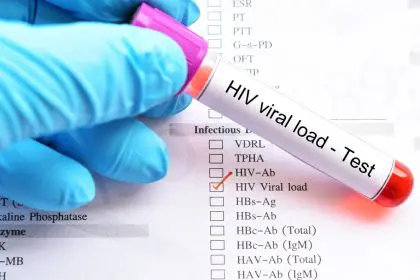Scabies occurs when tiny parasitic mites called Sarcoptes scabiei burrow into the upper layer of skin, triggering an intense allergic reaction that causes severe itching and a distinctive rash. While the condition affects millions globally each year, it remains treatable with proper medical intervention and comprehensive care strategies.
The microscopic mites spread primarily through extended skin-to-skin contact, making the condition particularly common in crowded environments like schools, nursing homes, and households. Despite popular misconceptions, scabies can affect anyone regardless of age, social status, or personal hygiene habits. Understanding the nature of this parasitic infection helps reduce stigma and ensures proper treatment for all affected individuals.
How the infestation develops
The scabies mite’s life cycle drives the infection process. Female mites tunnel beneath the skin’s surface, laying eggs that hatch into larvae within days. These larvae mature into adult mites, continuing the reproductive cycle and expanding the infestation. While the mites cannot jump or fly, they move easily between people during close physical contact, particularly in crowded living conditions.
The transmission process typically requires prolonged skin-to-skin contact, making certain situations particularly risky:
- Sharing a bed with an infected person
- Intimate physical contact with an affected individual
- Caring for someone who has scabies
- Living in crowded institutional settings
- Using contaminated bedding or clothing
While the mites cannot survive for extended periods away from human skin, they can briefly persist on fabrics, making indirect transmission possible through shared items. This understanding shapes both treatment approaches and prevention strategies.
Recognizing the signs
The hallmark of scabies is intense itching that often worsens at night, significantly impacting sleep and quality of life. As the infestation progresses, several distinctive symptoms emerge:
- A red, bumpy rash appearing in lines or clusters
- Thin, raised burrow tracks where mites tunnel under the skin
- Small blisters or sores from scratching
- Thick, crusted skin in severe cases
- Persistent irritation that intensifies with time
These symptoms commonly appear in areas where skin folds or experiences frequent contact:
- Between fingers and toes
- Around wrists and elbows
- In armpits and waist area
- On breasts and genitals
- Along inner thighs
- Around the buttocks
- Under breast folds
- Near the belt line
The pattern of symptom development helps health care providers distinguish scabies from other skin conditions, though the similarity to other rashes can sometimes delay proper diagnosis.
Getting proper treatment
Health care providers diagnose scabies through careful physical examination and symptom review. The presence of characteristic burrows and the distribution pattern of the rash often provide sufficient evidence for diagnosis. In uncertain cases, providers may take a skin scraping to confirm the presence of mites or eggs under a microscope.
Treatment involves a multi-faceted approach:
Prescription medications
- Permethrin cream (5%) applied to the entire body from neck down
- Oral ivermectin for severe cases or treatment failures
- Anti-itch medications such as antihistamines to relieve symptoms
- Topical steroids to reduce inflammation in severe cases
Essential home care
- Washing all fabrics in hot water (at least 130°F)
- Drying all washable items on high heat
- Sealing unwashable items in plastic bags for several days
- Thorough vacuuming of furniture and carpets
- Treating all household members simultaneously, even those without symptoms
Success depends on following treatment instructions precisely and ensuring all potentially exposed individuals receive treatment to prevent reinfestation.
Preventing complications
Without proper treatment, scabies can lead to serious complications that extend beyond the initial infestation:
- Secondary bacterial infections from excessive scratching
- Development of impetigo or other skin infections
- Crusted scabies in immunocompromised individuals
- Psychological distress and social isolation
- Sleep disruption leading to decreased quality of life
- Potential scarring from untreated sores
Taking preventive measures
While scabies spreads easily, several practices help reduce transmission risk:
- Avoiding prolonged skin contact with infected individuals
- Maintaining good personal hygiene practices
- Washing shared items regularly in hot water
- Seeking prompt medical attention after exposure
- Isolating infected items during treatment
- Educating family members and close contacts about transmission risks
Moving forward
Scabies remains a significant public health concern, but proper understanding and swift treatment can effectively control the condition. The key lies in recognizing symptoms early, obtaining appropriate medical care, and following through with all recommended treatments and preventive measures.
Remember that successful treatment requires patience – symptoms may persist for several weeks after treatment as the body’s allergic response gradually subsides. Continue following your health care provider’s instructions and preventive measures to ensure complete resolution of the infestation. With proper attention to treatment protocols and prevention strategies, most people recover fully from scabies infestations and can take steps to prevent future occurrences.
This story was created using AI technology.
















